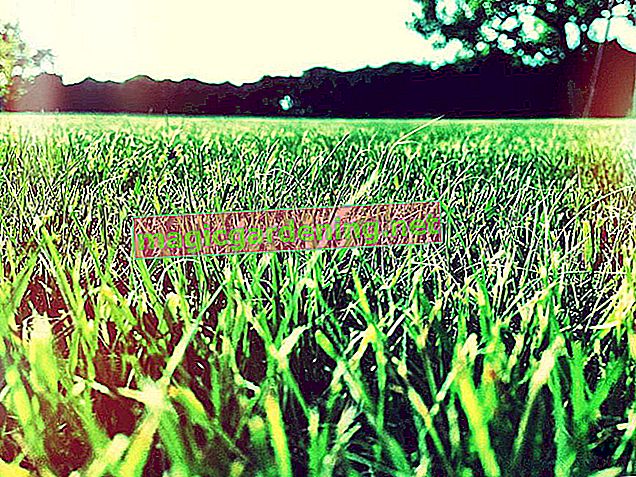
When is the best time to scarify?
In order to properly scarify the lawn, the weather is dry at temperatures between 10 and 20 degrees Celsius. In addition, no more severe ground frosts should be expected, so the months of March and April are recommended. You can scarify a heavily weedy lawn again in September in preparation for winter.
also read
- Scarifying the lawn after rain - is that possible?
- Scarifying the lawn - how does it work?
- Scarifying the lawn correctly - how deep should it be?
Step-by-step instructions for scarifying and fertilizing
A scarifier (€ 76.01 at Amazon *) works the lawn with rotating knives by scratching the sward 1-3 mm deep. In this way, all the weeds and moss are plucked from the ground and land on the surface. Here are the steps to get it right:
- Mow the lawn as deep as possible
- With the scarifier, walk across the area in two passes, lengthways and crossways
- Collect the combed out weeds and moss and dispose of them on the compost
- Apply a slow release fertilizer for lawns about 2 weeks later
- Repeatedly water thoroughly until all the fertilizer grains are covered
When you fertilize the lawn again later in the year depends on the type of lawn and the level of use. Ornamental lawns in the garden usually require two nutrients, while sports lawns are ideally fertilized in April, June and August.
Determination of the pH value provides information on fertilizer requirements
In order to make an informed decision regarding the adequate supply of nutrients to the lawn, we recommend checking the pH value regularly. Every garden center has uncomplicated test sets ready for you. Ideally, the value is between 6 and 7. If the result is lower, the addition of lime is advisable in addition to fertilization.
Tips & Tricks
If a lawn presents itself as an unsightly patchwork carpet after scarifying, experienced hobby gardeners close the gaps with overseeding. Simply loosen the soil and apply a special 'lawn plaster' from a specialist retailer. In the following period, water regularly and do not step on it so that the bald spots close quickly.
GTH







